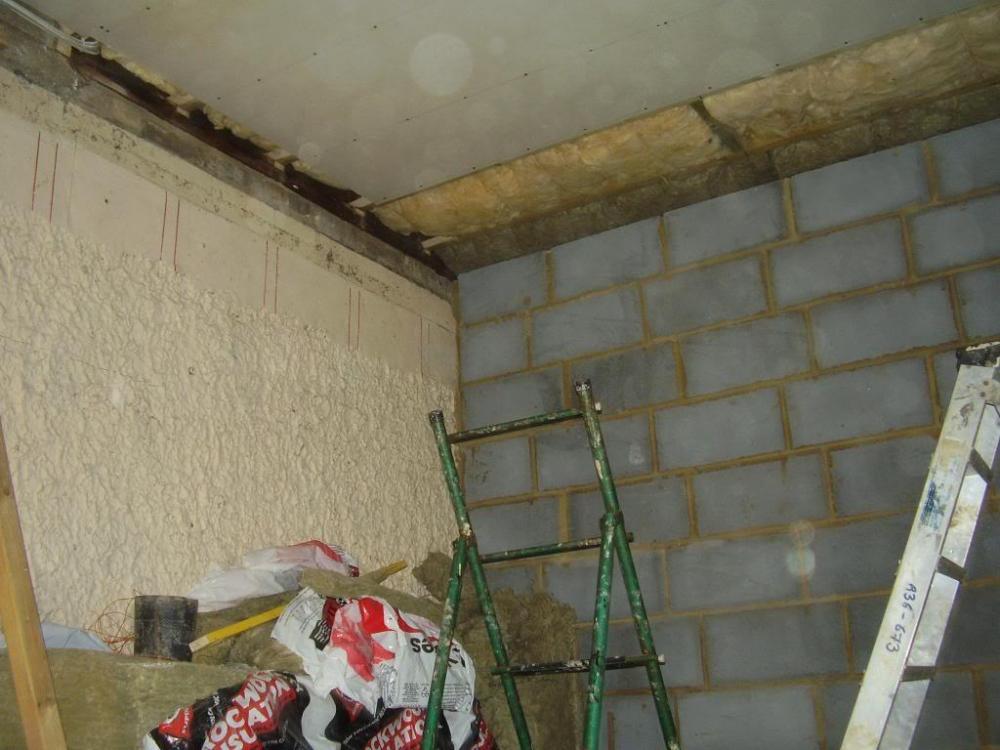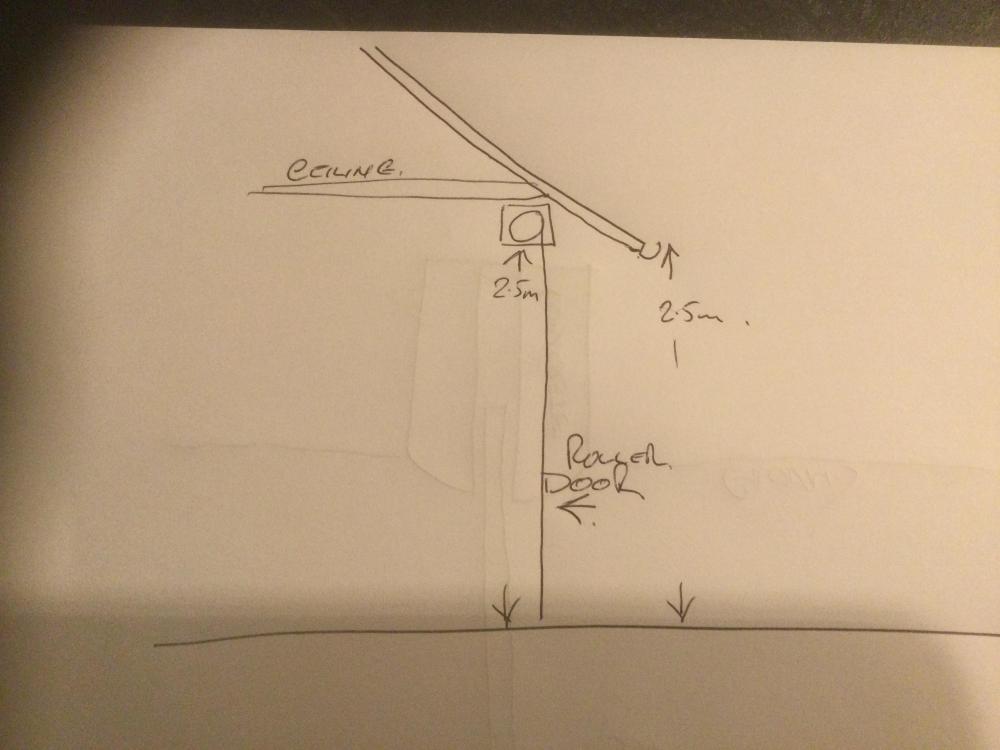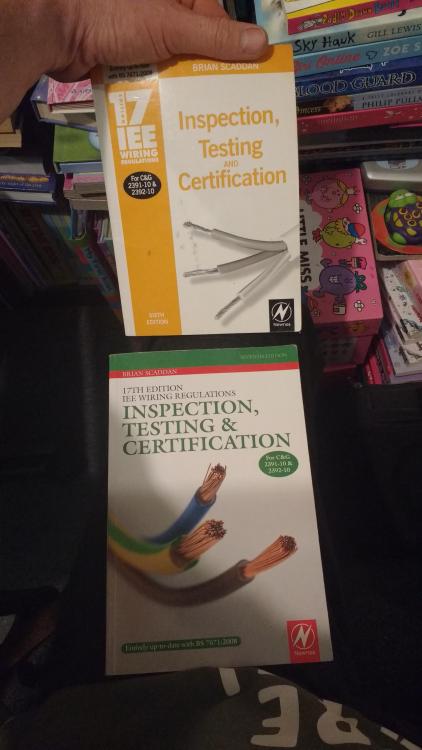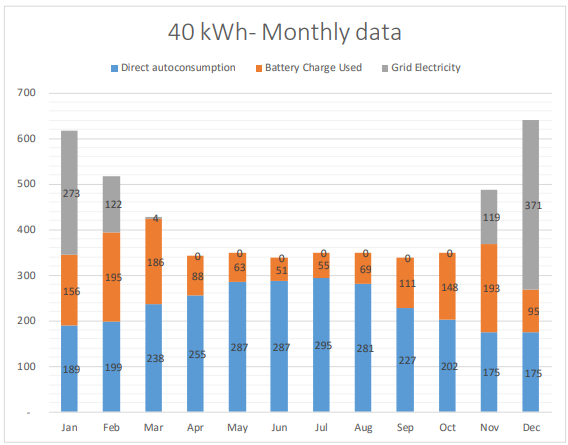Leaderboard
Popular Content
Showing content with the highest reputation on 10/03/21 in all areas
-
I think the main decision should be made on the availability of local skills. If there are no bricklayers in your area, then don't get bricks.3 points
-
I have always thought this. Despite being very good at woodwork I decided to go block and brick for the solidity factor, there was enough timber work to keep me busy throughout the build. Yes wiring and plumbing is not so easy but I can hang anything I want from very solid feeling walls and still insulated to near passive levels. Just my opinion.3 points
-
There is no right way to build. Each method you can pick will have its own advantages and disadvantages. Pick the one that suits your site, your budget and your access to skilled labour. The important thing to remember is to make sure whatever method you end up using is you do all the research first. If you want to use timber then use timber. If you want blocks then use blocks. It's your house so pick the one you want to build the house you will live in.2 points
-
We used dense concrete block Sap guys push towards lightweight But I made up the u value with a wider cavity and more insulation Heating still hasn’t come on since May I do quite a bit of work for a company with 100milion + plus turnover and they have completely given up on lightweight blocks Lots of Brickies would disagree ?2 points
-
If the ASHP is connected to the same "normal" radiators that the gas boiler used to feed, and you are trying to run the ASHP at 60 degrees or more to get the house hot enough, then it will perform very badly. It is what we keep saying, "Design" An ASHP is not the golden goose to replace a gas boiler UNLESS you re design the whole heating system that may involve changing ALL the radiators or installing UFH. I am willing to bet most of the retro fit ASHP systems we see criticised are "designed by salesman" and are not correct in an engineering sense.2 points
-
2 points
-
No offense but I hate the 400 year old argument for TF It’s like comparing a Rolls Royce and a Mondeo The ones that have been about for centuries are made of seasoned timber Usually Oak framed Not OSB like today’s TF Its true Modern TF have a very short lifespan compared to Brick and block and can be insulated within an inch of there lives But it’s also easy to get a traditional home up to a very high standard of airtightness also I work on both and find TF more convenient Which is truth would be known is the main reason for self builders preferring TF Our first build is traditional We looked again at TF for our second and third Apart from TF not being as solid a build Which is always the case The extra cost frightened us off At least a third more I do The plastering on TF student Accommodation Electricians and Plumbers are given two days to first fix a pod of 8 We have 3 to board 2 days to plaster All this while the outside skin of brickwork is going up Something that couldn’t be done with traditional Yey Trades love TF Some of these are sold to investors 50 year lifespan2 points
-
Eh..? Who told you that .??? There are TF that are 400 years old and more. I would expect 75-100 years min, and that’s conservative. On the other points, with good planning you can achieve all the perceived benefits with traditional construction methods as you can with TF, the only benefit is normally speed to wind and watertight.2 points
-
Correct, the gutter. I was limited to 2.5m for permitted development but wanted a tall door to get my van into the garage and give me a decent internal height as it was also used as a workshop. The roller door mechanism was about 350mm but still gave me 2.5m opening. I had no insulation as it was only a garage/workshop. The large overhang also meant driving rain stayed out of the garage when the door was open ?.my overhang was 500mm.1 point
-
1 point
-
1 point
-
Yeah. Although if you know you have automated blinds in any rooms likely to have any significant solar gain then this limitation is less of an issue in my opinion. That said, I would have done the same and not got PHPP if I'd already paid someone to do thermal modelling and wasnt certifying.1 point
-
There's no such things as negative resistance reading so on that basis I'm assuming your meter it broken.1 point
-
I would be very pleased if architects would start showing 400mm thick external wall on their planning drawings. Far easier to then adapt for brick / block, timber frame or ICF.1 point
-
If this is a new build, then you will have a SAP assessment and as long as it is done honestly and accurately you will know how much heat the whole house needs and can size the heating system. e.e. I knew the worst case heating demand for my house was just over 2kW so I chose a 5kW ASHP and under floor heating.1 point
-
Lifespan would be +30 years if it wasn't stoodents ?. Don't ask me how I know. (Tip: Rent to 2nd years not 1st years.) As it happens I just hav to go and look at a tenant's chimney, who says that bits of brick are landing on her leanto roof and garden table. Been in place since 185x .1 point
-
1 point
-
There is now a pallet across to bridge gap between the ladder and opening so makes it abit safer1 point
-
It's easy to say a brick house lasts a long time. But look at all the early (and some not so early) 20th century brick houses. By todays standards re insulation and air tightness they are absolute rubbish. It would probably be better if these were now accepted as "end of life" and there was a program to replace them with new energy efficient houses.1 point
-
1 point
-
I am sure many would disagree with you on this one, quite a few here have a professional timber build that is very good in all aspects and the customers very happy.1 point
-
Isn't that like saying 'I recommend a Ford Kuga', but not specifying which trim level, year of manufacture, limitations and price.1 point
-
1 point
-
Which is why I parged/rendered/plastered the internal block (even parged between ceiling/floor before flooring/plasterboard installed)1 point
-
1 point
-
Hi Evryone new to the site but not its knowledge google has led me here over many occasions over several years and i have finally joined Im looking to build a off grid/ nudura passive house with insulated raft foundation 10 x 8 meters footprint 2 story Ive seen on here before several icf posts if someone has done a simular build would anyone be willing to share with me a costing spreadsheet does not have to be evry nut and bolt lol im a electrical engineer and looking forward to being able to bring any future knowledge to this great community site1 point
-
We used the Marley Edgemere Riven tiles. That was a planning decision as the planners wanted us to use slate, and the Edgemere Riven finish were about the only concrete tiles they would accept that looked enough like slate. The Riven version of the Edgemenre tiles were thinner than the standard Edgemere and so probably about the same as your Forticretes ones. I didn't have any problems with breakages in use but I did have a LOT of broken tiles coming off the pallet. So much so that I notified the supplier that we had an issue with breakages. As it turned out, by carefully picking out the broken ones and putting them in 2 piles, broken left side, and broken right side, we were then able to use the ones broken on arrival for all the valley cuts so there were not in fact many wasted and we never did have to proceed with a claim for breakages. I did the roof myself so I was happy to spend the time sorting the tiles in that way. I wonder if a roofer paid on a price would do that, or just pick them off the pile and then end up with a pile of unusable broken tiles? Once I discovered the breakage issue, I had a golden rule, NEVER cut a good whole tile, go and find a broken one on one of the pallets.1 point
-
We use about 10kWh per day powering "stuff" that is not heating or DHW and that is pretty constant throughout the year. Some day I will do an appliance by appliance measurement to try and see if there is anything we can save on, but at the moment short of watching less telly I can't see an easy saving. Re the tumble dryer. the compromise we have is it is NOT a "dryer" it is a "towel fluffing machine" Certain things like towels, socks and underwear "must" have a spell in the fluffing machine so they end up soft and fluffy. If they dry entirely naturally they fail the "fluffy" test and get described as "cardboard". So just half an hour un the fluffing machine does it, they don't come out dry, but then when hung on the airer in the utility room under an mvhr extract vent, when dried by that they do pass the fluffy test, as long as they have had the short time in the fluffy machine. One day I will pluck up the courage to see a a period in the fluffy machine on "cold" will have the effect of making them fluffy.1 point
-
The airtightness of block walls comes from the render/plaster internally, yes attention to detail is required whatever the method.1 point
-
Change the word glue to advanced polymer adhesive and it sounds ok. As @markc says, depends on the glue and the size and quality of the mating parts.1 point
-
1 point
-
1 point
-
Biggest pile of s***e I’ve heard in years. It will fade eventually but it can be repainted. *edit: just to add that alu clad should have guarantee of 10 years against fading. If you’re going timber only, consider strongly a hardwood option. Powder coating has a 10 year guarantee - it lasts a hell of a lot longer. Paint finish is not a powder coat finish on timber windows. Alu clad is effectively zero maintenance, alu clad everytime time if budget allows.1 point
-
Get a battery vacuum cleaner. This is not a facetious comment, we are heading that way, not many of us use mains powered tools these days.1 point
-
As above, both methods can produce a well insulated low energy house. both can also produce a rubbish house, so whatever you do take care with the details. Timber frame is traditionally recognised as easier to run services, but that assumes if you build in brick and block then you chase all the wires into the walls and wet plaster direct onto the block. If you want the best of both worlds, there is nothing stopping you doing brick and block, and then creating a battened service void and plasterboarding the walls (NOT dot and dab) which will give you the same service void for easier alterations or additions in the future.1 point
-
Worth pointing out that there are a number of different 'timber frame' systems, with timber frame being just one of them. A bit more detail here, but not a definitive list: https://www.bre.co.uk/filelibrary/accreditation/rdsap9_91/BRE_RdSAP_Manual_5_-_Identifying_basic_constructions_v8_0.pdf https://www.trada.co.uk/start-here/timber-frame-construction/1 point
-
Just pull them on it & ask for the joints to be kept full in future. Let’s bear in mind that everyone can have a bad day people,before we erect the Gallows,eh? @Faz your lads want to bring the insulation right up to the reveals-bit short in places there.1 point
-
and easier to do later electrical alterations when some numpty forgets to put a socket in the hallway for the vacuum!1 point
-
??? My timber framed bungalow was built in the early 1970s, so 50 years old. When we stripped it back to the bare timber frame a couple of years ago, only one piece of timber was replaced due to any problem and that was the the floor joist under the back door threshold that was never protected except for a coat of paint.1 point
-
1 point
-
Have a (re-?)read of this thread, where we all talked about it. (Oh I see you did.).1 point
-
I'd phone up the planner and find out how it is going and what his intentions are.1 point
-
1 point
-
https://www.bere.co.uk/assets/NEW-r-and-d-attachments/Lark-Rise-Self-consumption-study-by-Energelio-160429.pdf is worth reading deeply if you're seriously considering going off-grid. It's the calculations for how close to autonomy you can get with a ~200m2 Passivhaus in the southern UK with 13kW of PV and a battery of varying sizes. Even with a very big battery (40 kWh in this case), in December it's still importing ~60% of electricity demand from the grid. Per PVGIS for Aberdeen, you'd need at least a 30kW ground-mount system to meet demand in December, which is the hardest month to handle - in the process producing 27,000 kWh nearly all of which would go to waste. You could probably downsize a bit as you're looking at a smaller house, but given how well insulated the example given is you're going to struggle with getting a 50% reduction without going full Passivhaus. Going off-grid with only PV and batteries in the UK is exceptionally hard. Assuming you need 500 kWh in December to give you some margin (most of the power coming from PV throughout the year), you only need a steady-state power of 700W to keep things going which isn't huge. Small wind turbines are very site-specific and a bit of a lottery though - average capacity factor seems to be in the 15-20% region (inferring you'd need ~5kW installed power), but can be very high or low. One interesting note - heating demand is 1000 kWh of electricity a year in this model and DHW another 800 kWh/year. Take that away and over an **average** year, you'll be able to run everything else 100% on PV. In the model the COP is assumed to be 2.8, so heat demand is 5100 kWh/year => equivalent to about 400 kg of Propane. So an LPG boiler plus standby propane-fuelled generator in case you get a week of miserable weather might be a decent option in your case. As noted the power draw will be very low from it - it's only there as a backup for the few times a year that the batteries run out and need a top-up, so fuel burn and running hours will be relatively low. Resale value is going to be higher on-grid and running costs a bit lower, but not shockingly so. It's really important that the house is very low-energy though - the cost per kWh of off-grid energy is much higher than on-grid. If it was my build, at £30k I'd go for a grid connection (mostly considering resale and the faff-factor), but if it ended up being a lot more (£50k+) then off-grid is feasible.1 point
-
You wouldn’t butt it against the stud in that case You would allow the tray size plus 5 mil from the first layer of board Your looking for one board either edge to lap on to the tray Ive framed hundreds of these and tiled even more1 point
-
All of the resin ones I come across don’t have up-stands But the fiberglass ones do We always run the board flush with the up-stands We normally wit for the trays to land on site as they can vary by a few mil Most site mangers want to see the board overlapping by 10 mil We normally board them and cut the bottom 450 off and screw it to the back wall for the plumber to put in after he’s fitted the tray1 point
-
1 point
-
Ok Velux state that you must use the EDJ flashing kit with the roof light when combined with corrugated roofing and a slope between 15 and 90 degrees. The document is just a series of pictures which I assume will be good for anyone who has installed these before. I will keep you posted on progress but this is a very useful start. Thank you. Customer Support Mailbox <customer.support@velux.co.uk> 16:19 (10 minutes ago) to me Good Afternoon Tom, Thank you for contacting VELUX. Please see attached, the installation instructions for installing a VELUX window into corrugated sheeting. If your corrugated sheeting: > Has built in installation (is double skin) + is being used on a roof pitch of less than 15° - You will need to create an on site upstand and use a VELUX ZWC Special Head Flashing > Has built in installation (is double skin) + is being used on a roof pitch of more than 15° - No upstand will be required however you will still require a VELUX ZWC Special Head Flashing. > Has not got built in installation (is single skin) + is being used on a roof pitch of less than 15° - You will need to create an on site upstand and use a VELUX ZWC Special Head Flashing > Has not got built in installation (is single skin) + is being used on a roof pitch of more than 15° - You will need to use our EDW flashing kit (standard installation) or our EDJ flashing kit (recessed installation). Please follow the below links to get access to the relevant information for your requirements: ZWC Window Profile Set - Single Installation EDW Installation Instructions EDJ Installation Instructions Tom1 point
-
We built a timber frame house with 300mm pumped cellulose insulation. For me, I found: Pros: - Quick - factory built panels meant the whole thing went up in a matter of days. - Accurate - internal walls etc are square, and rooms are exactly as shown on plan. - Quiet - external noise is damped very well. Part of the quietness definitely comes down to decent windows though. - High decrement delay. Cons: - Internal noise transmission. This is the big one for me - I find it frustrating how noise makes its way between rooms. This might have been improved if the chancers who did my drywalling had installed the insulation better, but I'm not sure how much better it would have been. - Internal well strength - we used fermacell anywhere we thought we might like to hang something, but even so, whenever I want to put something on a wall, I need to check whether it's fermacell, and if not, go about finding a stud (oo er vicar). Block walls would have been better. - Vibration - again, maybe something that doesn't bother others, but slamming our (admittedly fairly large) front door causes windows in adjacent rooms to rattle. No big deal, but it constantly reminds me of the construction method. I suspect most others wouldn't find this as distracting as I do (I'm the guy who'll lie awake at night distracted by a mosquito three rooms away). Overall, I'm happy enough with timber frame, but if I were doing it again I'd at least consider using some form of masonry-based construction.1 point
-
I made mine. Still up in the loft working away. I also have some other ideas on how to make it easier and cheaper.1 point

















.jpg.c21f3ac78c9b7efd90cbdcb312744dc5.thumb.jpg.7adcad4c0e384f5ecd7d56b0618df6e5.jpg)